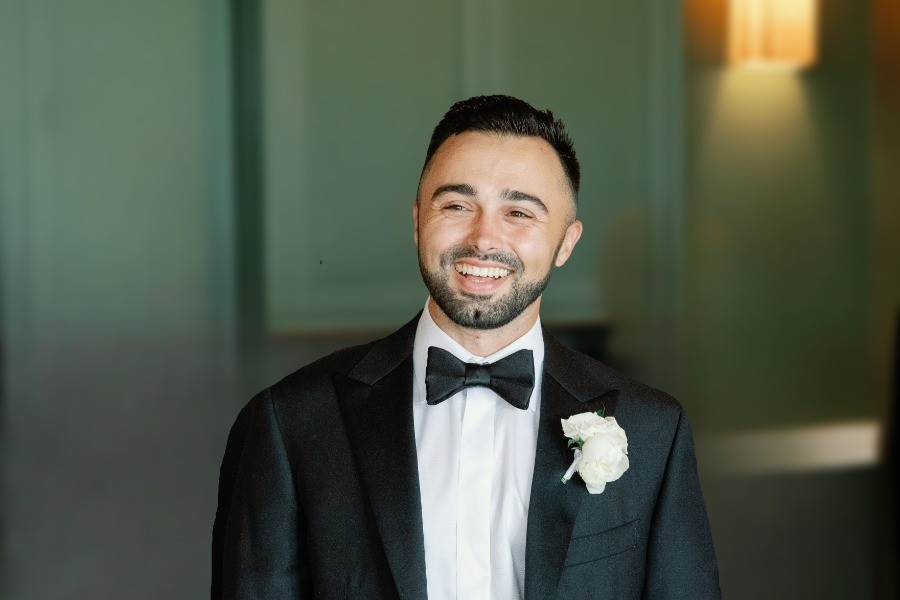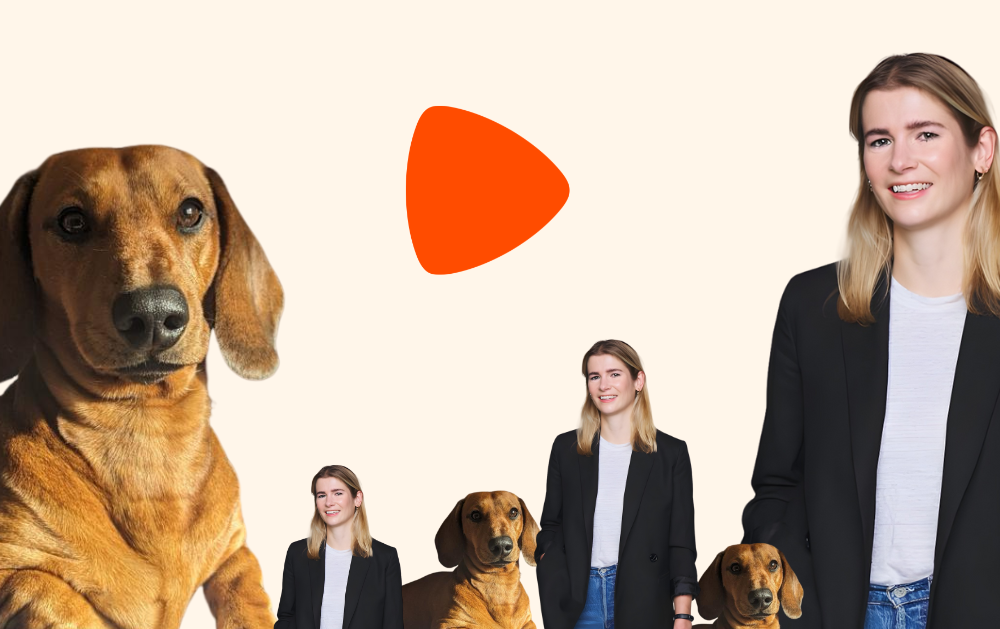Inside Snap’s DACH playbook: Jan Mueller on building a market from the ground up

Building a market from the ground up
Jan, you were at Google before joining Snap nearly eight years ago. What was the difference between those two environments, and what made you take the leap to a much smaller company at the time?
That’s actually the reason why I joined Snap. I was at a very happy and good place at Google when Snap approached me, so I wasn’t looking to leave at all. At first, to be honest, it was just competitive intelligence that drove me to say yes to a couple of interviews. But very quickly, it turned out this was a really interesting opportunity that Google didn’t offer anymore: the chance to open up a market. Where in the world could you move to open up a whole new geography for Google? It didn’t exist.
Every time you talked to an old-timer at Google, they always had this spark in their eye when they talked about the 2002-2004 era, when things were kind of like the Wild West. And that’s exactly what I found at Snap. It was the actual Wild West.
What was that "Wild West" experience like when you first came on board as the second seller in the region? How did you even begin to build the business?
I had a crazy interview experience. I thought I was done with it all, and then the Chief Strategy Officer at the time, Imran Khan, surprised me by wanting to talk to me for the final interview. I found out he was the person that took Alibaba public as an investment banker and then took Snap public. I was really intimidated, but the interview went well. I asked, “Alright, so what are the clients I should work on?” He just said, “That’s your job. You tell me.” I thought, okay, that’s the level of freedom we have. That’s interesting. So that’s how it started.
My first priority was to create a sense of urgency and scarcity. In a new market, you need to build momentum from the ground up. I focused on securing a handful of well-known, respected brands as our initial partners. These “lighthouse” clients would serve as social proof for the rest of the market. The goal was not just to close deals but to create case studies that would demonstrate the value of our platform. Simultaneously, I was relentlessly networking, attending industry events, and building relationships with key players in the media and advertising world. It was an intense job of selling the vision, educating the market, and building a foundation for future growth.
The evolution of the advertiser conversation
Given you were starting from scratch, how have those initial conversations with advertisers matured over the last eight years?
When we started, it was literally about, “Will you trust us for a first campaign, just for a test?” It didn’t matter what advertising objective they had. I’ll be honest, at first, we just wanted fast adoption of the platform, and we knew I’d figure out the strategic bits later.
Now, multiple evolutions later, it’s about being fully client-centric and laser-focused on the specific advertiser’s objective, or even more specifically, the objective of the unit within the company you’re dealing with. It’s about knowing inside and out how they define success, how they measure it, and then how to deliver it. Whether that means low-cost impressions or an ROI defined by a complex calculation that takes incremental purchases as key inputs, whatever it takes, we’ll find a way.
Beyond performance metrics, how do you make the case for Snap’s unique audience and reach?
A key point is our incremental audience. Depending on the market we’re looking at, on a given day, 30 to 40% of our users won’t open other major video platforms. So the argument, “I’m already on another platform, that’s all the Gen Z I need,” isn’t quite right. 40% of Snapchatters is a sizable number to care about. I never quite understood that argument, since people were already advertising on Google, and then simply expanded to advertising on Meta as well. Wasn’t Google already covering the entire market? So we are very incremental. This means your target audience is on Snap, and some of them can’t be reached anywhere else.
Snap’s platform is designed differently from other social media, with the camera at its core. How does that unique structure create different opportunities for advertisers?
Snap was intended to be different. It was designed based on an understanding of the drawbacks of traditional social media. It’s not designed to take you into an unmoderated algorithmic feed that just lures you in to consume other people’s content that makes you angry. Quite the opposite. The first thing you see when you open the app is the camera, inviting you to be creative. The core product value is communication with friends and family via camera, video, images, and AR.
That’s what draws users back to the app 30 or 40 times a day. But there’s also content being produced and shared with friends, within which ads can be shown. And then there’s content in the camera itself, with AR. Of course, some surfaces have no ads, but we’re closely monitoring how we can monetize those tabs. Ads are coming to Maps, and outside the EU, we’re already working on positioning ads in Chat in a respectful, non-intrusive way.
It’s always a bit harder, but also more exciting, to be on the innovative front. It’s easier to be the strategic second mover. Trust me, back when I joined, there was still a discussion whether videos should be vertical or horizontal. Getting advertisers to recut them was a pain. But those evolutions, while painful at first, do pay off and they perform now.
Cracking the code on performance and commerce
Let's talk about that performance. Dynamic Ads are now a great driver for you. What were the challenges in getting them to work effectively at Snap's scale?
I called Dynamic Ads a game changer when they launched, and I was right eventually. They are now the number one driver for attributed and lift results on Snap. It just took us a while to get there. Why? Because deep dynamic ads, like showing you the right pair of sneakers, require solving two highly complex mathematical problems. First is the heavy ranking that decides whether or not to bid for your ad impression in the first place, and if so, how high. The next loop is specific to dynamic ads: now that I have won your impression, which of the million products from the catalog should I show you?
That is a really, really tough mathematical problem to solve, and one that you want to work on immediately, as soon as the first 100 impressions of a campaign. With the capabilities of machine learning and AI, we have more technical horsepower to elegantly solve this problem now.
How did privacy changes like ATT and GDPR impact your ability to optimize these complex formats?
It definitely played a role. Do I think that we could have done a better job when ATT hit the market? Yes, for sure. Did some other platforms do a better job? Yes, which proved that even without those signals, you could have done better. However, more signals, especially more conversion signals, always help more. In the absence of those signals, there was an effect to be felt. In hindsight, I just think it’s theoretically possible that we could have gotten to where we are now a year or so earlier.
But we got there. We got really, really good at something called “cold fusion”, and getting over the “cold start” campaign issues and really honing in to deliver performance quickly. Think about how vertical video feeds get good at showing you something you’re interested in after just a couple of swipes. It’s essentially the same logic we’re applying here: getting really good at showing the right shoe or shirt with very limited signals about a user or people who behave like them. The early start campaign issues are a thing of the past, and even after the learning phase, the results are on a completely different level.
What are some of the most creative ways you've seen brands leverage Snap's formats?
I continue to be surprised by L’Oréal. Through the sheer number of brands under them, they all need to be differentiated, and that forces them to tell creative stories. I’ve seen such great AR experiences and video executions from them.
Another one is Otto, the e-commerce player. They relatively frequently invite you into a branded world, like a virtual campsite. At the end of the day, they want to land the message that you can buy anything for your camping trip on Otto, but it’s done in a playful way where you can interact with all kinds of products.
Then your former colleagues at Zalando are super creative when it comes to the lower funnel. They are open to anything: trying out shoes, sandals, the newest tech that will take 2D imagery and put it on your body three-dimensionally. They’ll just try it out, and whatever works, they will scale. That freedom to test is great because many companies fail at just being able to say yes to a new idea.
The next frontier of AI and augmented reality
Looking ahead, what makes you most excited for both users and advertisers on Snap?
In the here and now for advertisers, that elegant solution to the decade-long problem of showing the right ad to the right user at the right time. I think with AI trailblazing through every industry, we’re going to see so much better, much more relevant ads. That’s great for advertisers, but also for users. If it’s an advertising model, you pay by having to be exposed to ads; the more relevant they are, the less painful it is.
On the user side, I get really excited about next year’s public release of our new Spectacles. We’ve been working on them for 11 years; we’re not jumping on the bandwagon here. The new version is going to really change the game. It’s going to be super lightweight; you don’t need any extra hardware. Your hardware is going to be the glasses, your hands, and your voice, and it’s going to allow you to overlay AI-powered AR into the world around you.
How will these new Spectacles and AI change the creation of AR experiences for brands and creators?
It’s going to do things like automatically translate signs around you. You’ll be able to look at stuff in your fridge, it’ll tell you what you could cook with it, and then walk you through every single step while you cook. It’s super exciting. As with everything, every new piece of technology starts out as a toy and then it becomes a tool.
One thing that has structurally always been a problem around AR was coming up with the concept and then formulating that into code. We’ve now released a feature in our Lens Studio called “Easy Lens,” which is a no-code way of just prompting an AI. You tell it what your Lens should look like and how it should function, and it will create the AR for you. That is amazing. One key barrier of entry into the AR space is now gone because people just didn’t know how to create them. Now you don’t have to know; you just have to be able to communicate what you’re envisioning.
There’s also a whole ecosystem of AR creators. There are amazing studios like Headraft in Hamburg or Busterwood in Amsterdam. They are like creative agencies that will create an AR asset for you that you can use on Snap or other channels. This professional ecosystem makes it easier than ever for brands to build high-quality AR experiences.

AI decisioning: Hightouch on shaping the next era of outcome-based marketing
Alec Haase of Hightouch explains how AI Decisioning transforms marketing by enabling outcome-based personalization through AI agents...